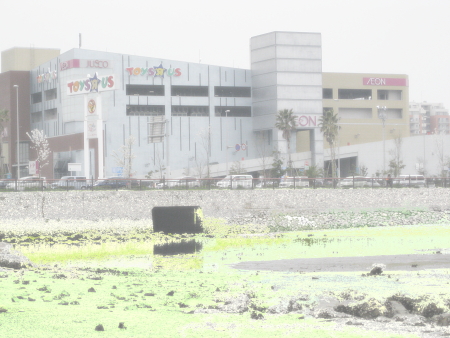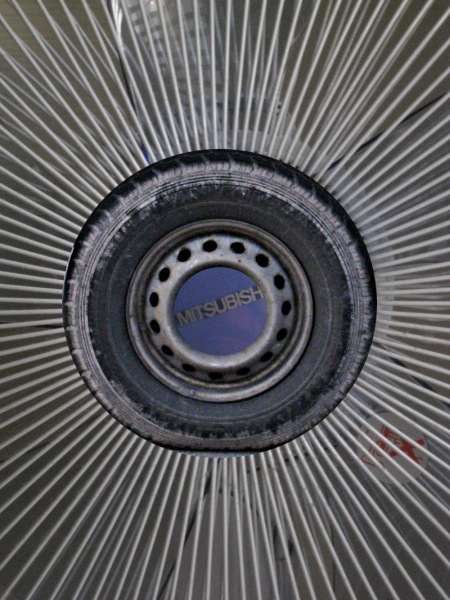Archive for the 'physics' Category
about Gorleben
Wednesday, November 12th, 2008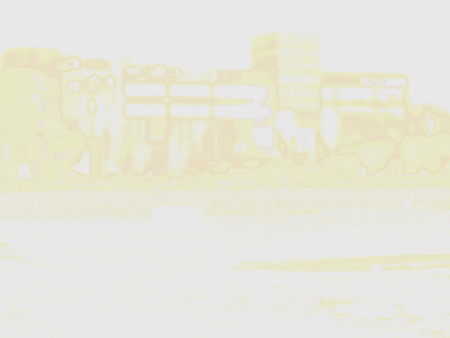
Someone was asking me wether I am pro or contra using Gorleben as a final nuclear waste repository.
The answer is: I don’t know.
Most of the containers brought there seem to be an interim solution, so at one point one is forced to think about what to do with the material. The salt dome at Gorleben which was originally planned as a final repository (in the late seventies) was declared (if I trust the Wikipedia link) by the Physikalisch-Technische Bundesanstalt (resource: Zusammenfassender Zwischenbericht über bisherige Ergebnisse der Standortuntersuchung in Gorleben. Mai 1983, Braunschweig as less suitable:
„Eine erste Bewertung des Deckgebirges hinsichtlich seiner Barrierenfunktion für potentielle kontaminierte Grundwässer zeigt, daß die über den zentralen Bereichen des Salzstocks Gorleben vorkommenden tonigen Sedimenten keine solche Mächtigkeit und durchgehende Verbreitung haben, daß sie in der Lage wären, Kontaminationen auf Dauer von der Biosphäre zurückzuhalten.
translation without guarantee: A first evaluation of the sediments above the dome with respect to their functioning as a barrier against potential contaminated ground water displays that the clay sediments above the central parts of the salt dome Gorleben do not have enough thickness and spreading in order to prevent in perpetuity the contamination of the biosphere.
And there are other reports which indicate that there may be more geological problems.
Moreover the decision for Gorleben as a final repository was influenced by political/non geological citeria, like the one that Gorleben used to be close to the border of the former GDR and thus economically less attractive.
So it seems that a profound investigation also of other possible locations and their comparision with Gorleben has to be made.
Last not least I feel quite uncomfortable with the notion of “final repository” in general. If it means that the stuff is dumped there and then more or less left alone (and thus in the long term forgotten) then this can become very problematic (see e.g. Asse II).
It is important that the problem of nuclear waste is always present in the public mind (so alone for that reason peaceful protest is usually good).
This implies that the information about nuclear waste repositories, former nuclear production sites and in general about (possibly) contaminated sites has to be easy accessible for everybody and in particular for future generations. In particular one would expect that there exists a detailed map about such sites in the internet (“a google earth for nuclear sites” ?), however I have found nothing of this kind even not on the page of the International Atomic Energy Agency like on the pages of their waste technology section. The Dirata Database (which was hard to find) is a first step. Moreover it is a challenge to adress the waste problem which is involved with small size waste like with these mini nuclear power plants (e.g. probably soon in Romania) and where one reads the following about a company called Hyperion (which seems to have already a six year waiting list):
“Because the Hyperion plants would be buried underground and guarded by a security detail, the company explains that they´ll be out of sight and safe from illegitimate uses.”
Next year, the company will submit an application to build the modules to the Nuclear Regulatory Commission.
As a matter of fact the world has to think about how to make important information of nowadays accessible to future generations. The Svalbard fault, where information about plants is kept is one example. The genetic information about nowadays people and animals may also be important information to store somewhere in a “world treasure box” (especially given all of the above). A map with information about nuclear sites certainly has to go as well into that treasure box.
->see also this BBC report about a lost US nuclear bomb over greenland (via Tagesschau.de). The cancer records in denmark seem to be sofar only partially online. It would be interesting to look into them like into these ones.
addition Jan. 28, 2020:
Here a link to a blog post on Ars Technica about the Nature Materials article , 2019. DOI: 10.1038/s41563-019-0579-x, “Self-accelerated corrosion of nuclear waste forms at material interfaces”, which illustrates that plans to store nuclear waste by putting it first into a layer of chemically inert, insoluble glass and then putting this into a stainless steel flask are basically not working when this type of containment is exposed to water.
addition Feb. 8, 2020:
The essay Death and succession among Finland’s nuclear waste experts is an essay by anthropologist Vincent Ialenti about how the death of a leading finnish engineer (with the pseudonym Seppo) concerned with nuclear waste management gives an exemplary insight into “a larger, global expert-loss drama.” The essay gives also a very brief descriptiosn about finnish methods of nuclear waste storage (see below).
I do not fully agree with Ialenti’s conclusions and interpretations, but it is an interesting read into a “drama”, that is not only taking place in nuclear engineering, but also in other technical fields. The “drama” is largely due to an understaffing of the technical sector in societies that are largely “run” (in an economical and political sense) by people with not so much technical expertise.
Ialenti describes:
Studying Seppo’s character and influence anthropologically is not about capturing exactly what he thought, precisely what he did, or how he did it. Rather, it’s about examining the effects of “what would Seppo do here?” moments, in which surviving colleagues brought recollections of the man to bear on their present work.
Ialenti suggests:
“I propose that nuclear experts pause for a moment to consider how they can best preserve the memory of an expert’s thinking patterns in their work lives. Cultivating that style of self-reflection can help nuclear experts better understand their predecessor’s insights that they may already be preserving.”
I think it is less “thinking patterns” per se that are sought with the question “what would Seppo do here?”, but more desicion making patterns, i.e. questions of where do you set priorities, where do you think more research is necessary etc. in order to make a decision. In important settings engineers usually already document why they decided to do something in this or that manner (sometimes this is though not openly possible) and there are by the way also computerized tools which support this, but of course the less time there is for performing technical tasks (like due to understaffing) the less time there is for documentation and instruction. Last but not least what seems to be asked for here (?) is to document an experts intuition. Good luck with that.
The essay contains some technical inlets and in particular one about finnish nuclear waste containers:
Massive metal casks will encapsulate Finland’s spent fuel rods for long-term storage. The outer canister (left) is a cylindrical sleeve of copper, one meter long and five centimeters thick, intended to protect a cast-iron insert (right, here with one fuel rod) from the corrosive effect of groundwater for at least 100 000 years. The cast iron itself resists the mechanical stresses of bedrock.
which refers to the addtion on Jan. 28, 2020.
Remark to this: The Standard electrode potential(table in german) of Copper and Iron are close together so there is not such a high voltage (potential difference) between the two metals, but according to the german table it is still 0.39V. That is Copper acts here as an Oxidizing agent and presumably if the container is not super tight then the iron might rust even faster than without copper container – or in other words the copper container is rather the “opposite” of an Galvanic anode. Copper is considerably easily dissolvable by acids (In that context one might think of sulfate in groundwater).
commemorating Tricastin
Sunday, November 9th, 2008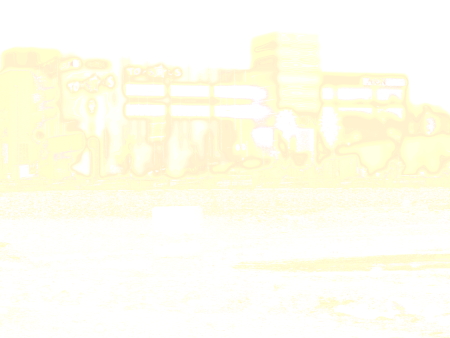
On the occasion of the current protests over here in Germany against a castor transport of nuclear waste from La Hague to the rather unsecure nuclear waste storage unit at Gorleben* I’d like to commemorate the lately average at Tricasin.
*(see also reports about a nuclear waste storage facility in a salt mine called Asse II, which has to be closed due to leakage)
busy
Sunday, October 12th, 2008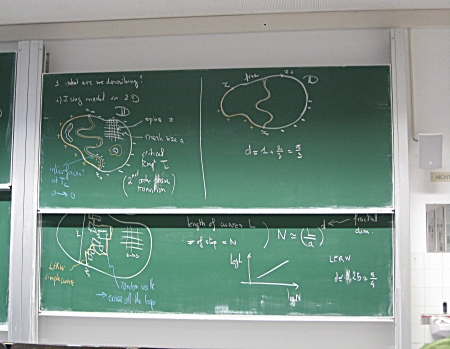 artsy illustrations by Denis Bernard
artsy illustrations by Denis Bernard
We are currently busily zooming between, Japan, Berlin and Munich and in between I was trying to learn about boundary CFT.
focus and context, part IIa: A quantum computation game
Saturday, October 4th, 2008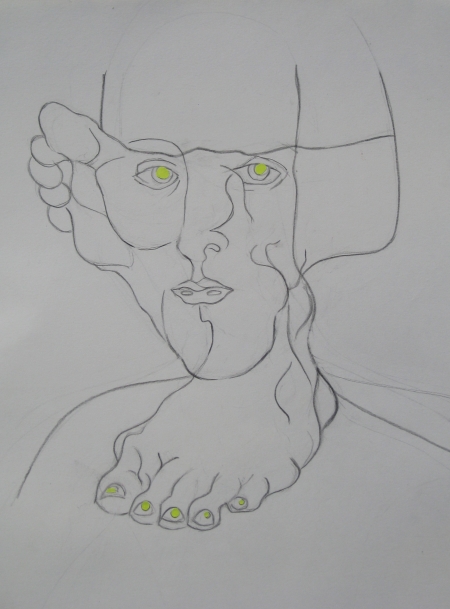
As already mentioned in the last post I am going to supervise the exercises of a quantum computing class. Quantum computation was already a couple of times mentioned on this blog (like here), but I never really explained it to our art and design readership.
This blogpost belongs to series of posts related to the issue of focus and context.
So how can one describe quantum computation within a few words? Michael Nielsen, who actually wrote a whole book with Isaac Chuang about quantum computing (and who seems to be fed up with it?), tried this already on his blog.
I would like to try the same however differently with maybe fewer words (?), by using an analogy. So hopefully my post is kind of supplementary to Michael Nielsens.
In a natural language the information is conveyed in a way which may be ambiguous, i.e. words may have many meanings and thus the interpretation of their meaning depends on a given context. One can see this e.g. in the ambiguity of translations.
An example:
Look at the in the above art work mentioned german word “wegetreten”. “wegetreten” could be interpreted as “wege treten” (weg=path, treten=step), so the translation would be “pathmaking” or it could be interpeted as the word “wegetreten” read as: “weg getreten” (weg=away, getreten=stepped) meaning “pushed away” or -as a second meaning “stepped aside” or it could be read as “weh getreten” (weh=pain) (with a slight orthographic deformation) and thus would mean “to have injured”. So if a CEO gives a speech and would say the sentence: “Mit unserem neuen Ansatz werden wir Wege treten, die uns in neue Dimensionen führen” (with our new ansatz we will produce plathways which will lead us into new dimenions) then due to the addition: “which will lead us into new dimensions” it is rather clear what he/she meant – it’s quite a standard CEO sentence.
However without the addition the meaning of that sentence would depend on the exact pronounciation (i.e. the “e” in “weg” would be spoken slightly shorter in “weg-getreten” than in wege-treten, which sounds the same as weh-getreten). If you cant perceive the precise pronouncation like because this CEO is always mumbling then “mit unserem neuen Ansatz werden wir Wege treten” could also mean: “with our new ansatz we will be pushed away”, I.e. it would have rather the opposite meaning of “with our new ansatz we will be producing new pathways”. One could probably recover the correct meaning of the sentence if one would know the rest of the speech, or if one would know to whom this sentence was adressed, i.e. if one would know the given context.
(There is a bit about Homonyms in this randform post. In this post also metaphors were mentioned. However including metaphors would make things even more complicated so lets leave them out for a moment).
So conveying the information “wegetreten” (like in a SMS and allowing for a slight orthographic freedom) means to convey at least the above four meanings of “wegetreten” – all at the same time. And if you send this information like in a SMS then the interpretation will depend on what the receiver of the information knows about you and his/hers interpretation will depend on that given context (a bit on the different approaches towards context sensitvity was mentioned in this randform post).
Other forms of context may be that the interpretation may depend on the emotional and/or psychological state of the receiver a.s.o. (The interpretation of a code (which is here in our above example a word), or in other words the choice of an associated meaning was already discussed a bit e.g. in this randform post. The difficulty of choosing codes were indicated here and here or here)
A “state” in quantum mechanics is something like a “word”, i.e. you send some information, but its actual information, that is its meaning – may be blurred. I.e. instead of having only one definite meaning or none at all (“word switched on or off”) the meaning could be ambiguous.
Lets simplify a bit and recall briefly what’s in a normal computer: A computer program can be seen as a high level “translation” of a table of “yes'” and “no’s” or “on and offs”. These tables of “yes” and “no’s” provide rules of how to modify “switches” (electronic components) which are connected so that they form “circuits”. These circuits in the turn modify data (which is also given in terms of “yes'” and no’s”). Sometimes the programm is “hardwired” (like burned into a chip) and thus forms a kind of unit with the electric circuits. In particular a “cascade of switches” can be seen as a programm.
So the information in a normal computer is encoded in terms of bits, i.e. giant tables of the two possibilities “yes” and/or “no”. One calls this often “binary” (logic) which comes from the greek word “bi=two”. In a quantum computer this is different, i.e. the information is “blurred”. This means that the information is usually not a definite “yes” or “no”. So it is a bit like in our above analogy.
One can actually simulate a quantum computer with a normal computer by using the mathematical description of quantum mechanics, however in most cases you would need giant computers for the simulation of a relative small quantum computer.
But lets return to the analogy:
Choosing a “word”, i.e. choosing a bunch of certain possible meanings is in analogy to a “quantum mechanical preparation of a state”. A quantum mechanical “measurement” is in analogy to an “interpretation”. Since the context is influencing the probability of an interpretation one could see “context” in analogy to a set of “quantum gates” or “quantum circuits” which are the “circuits” of a quantum computer.
Quantum circuits are in in analogy to the usual electronic circuits you have e.g. on your ardunio board, i.e. they manipulate data. However the physical realization of quantum circuits is different from usual electronical circuits since quantum circuits make direct use of quantum mechanics and the usual electronic circuit boards make use of quantum mechanics only in a rather indirect way. In particular the encoding and processing of information in quantum circuits is different (this is what I tried a bit to explain above) from the one for electronic circuits, which use -as already pointed out- binary (or other like e.g. ternary) logics.
Due to this difference this in particular implies that if you remodel binary logical gates like in genetic design (like in synthetic biology e.g. with biobricks or within DNA computing) then the outcome will more resemble an ordinary computer (however with biological substituents and may be partly fuzzy logic) than it will resemble a quantum computer. Although there may be quantum logical effects also in biological composites, as e.g. indicated in this randform post.
Using the above analogies you could play being a quantum computer with your friends. I.e. by sending out ambiguous sentences and by waiting for their interpretation (which you somewhat see by their response). You could form chains (“circuits”), where you transmit the information, similar to the game “Stille Post” – just that you may also reformulate.
However it should be pointed out that the above is only a more or less weak analogy. There are major differences between such a game and real quantum computing. One important difference is that once a quantum mechanical measurement took place the original quantum state is usually considered to be distroyed. In our analogy this would mean that once an interpretation has been made no other interpretation would be possible any more.
In particular if you (I call you Alice) send your information to someone called Bob and someone intercepts your communication and would interpret it then Bob would know that someone intercepted your communication since he couldn’t interpret your message anymore properly. This feature is at the heart of “quantum encryption“. Another basic feature is the socalled “entanglement” which would mean that – looking again at the analogy – two words are entangled. I.e. if someone interpretes one word then the meaning of the other word would be instantanously determined. This feature is at the heart of the socalled quantum teleportation protocoll.
On the other hand if one assumes that there may be quantum mechanical effects taking place in our brain then this would shed a different light on such a game. Unfortunately it is also clear that a quantitative evaluation of such a game would be extremely difficult, if not impossible, since it is related to personal interpretation. Maybe one can find more thoughts on that issue in this new book by A. Connes, M. Heller, S. Majid, R. Penrose, J. Polkinghorne and A. Taylor (which I haven’t looked at yet) (book blog).
One should make some comments on the possible important applications of quantum computers.
One application is that they could be used for evaluating theoretical models of mesoscopic quantum systems, which could be incredible helpful for the design of new materials (like for solar cells or nano medication) (see also this research seminar)(if we generously assume that patent laws are abolished, because otherwise I see quite some conflicts ahead which will be due to patented genes, patented software algorithms, patented processes of nanofabrication etc. )
Another fact is that there are certain computer algorithms with which certain problems can be solved much faster than with ordinary computers. In particular the security systems of banks and military are relying on such algorithms. In other words having such a powerful new computer would mean that one could break more or less into all current security codes in the world.
And that is why i consider it to be highly problematic if private companies are pursuing research in such a security relevant branch. And it would be especially brisant if these companies would be known for pursuing rather restrictive politics with regard to openness, intellectual property rights etc.
But that is also why quantum computing is a rather hot topic and thus a lot of students want to learn it and even do the exercises..:).
In my mathematical work I mainly touched upon a part of quantum computation which is called topological quantum computation. The main (rather loose) connections are dating back to my Ph.D. thesis (from 1996…) which I may put online, if I should ever find the time to do so. I may eventually also write up some stuff, which is sofar still somewhat buried in my mind.
Buchbinder Wahninger HELP?!
Monday, September 29th, 2008LHC
Tuesday, September 9th, 2008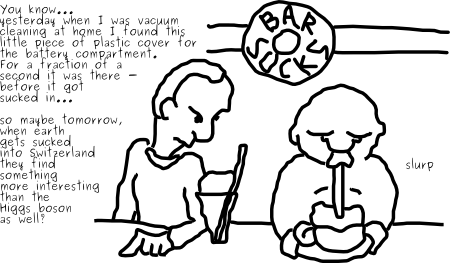
nuclear bombs and Monju
Wednesday, August 6th, 2008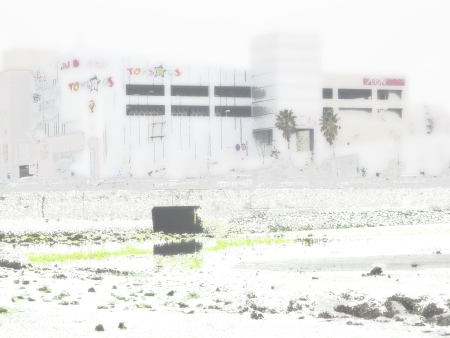
Hiroshima and Nagasaki, the two cities which suffered under a US nuclear attack are in the vicinity of Fukuoka (where the writers of this blog are currently located), so there are quite some people around here for whom these attacks are not just a scary story but bitter reality.
The bombs were a production of the Manhattan Project which was initiated by the fear that Nazi Germany could develop bombs of its own (which turned out wasn’t the case) and there were plans to throw nuclear bombs on Ludwigshafen, Mannheim and Berlin. Luckily Berlin capitulated early enough! If this wouldnt have been the case you probably wouldnt read this blog, as both of my parents were in Berlin in wartimes (with a few exceptions: my father and his mother (a single mom) were evacuated to Bavaria for a short time and my mother and her mother went on a trip to get the mother of my grandmother (whose husband died already in the first world war) out of Poland)
Among the targets of the US bombs were the Mitsubishi Steel and Arms Works and it is a strange coincidence that right this company is currently developing Japans new fast breeder at Monju (partially in collaboration with russia). At this point one should repeat that fast breeders bear a high proliferation risk.
The old fast breeder in Monju was closed in 1995 following a serious sodium leak (which was luckily not radioactive like this leak) and fire. It is expected to reopen in 2008.
power off
Wednesday, July 30th, 2008I currently have to refrain a bit from blogging as I am currently a bit busy with all sorts of stuff, like I just finished my class, I have to prepare for a geometry conference and to care about other general organisatorial stuff like such “nuisances” as that the electricity of our appartment was suddenly switched off. As everybody nows such “nuisances” can keep one pretty busy.
about the leakage at Tricastin
Wednesday, July 23rd, 2008